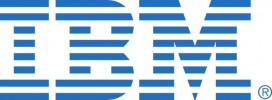The Process of Asset Management 14 Sep 2021
Assets drive businesses. These items of value span many categories and can be tangible goods – such as real estate, computers, office furniture, and other fixtures – or intangible items – such as intellectual property. To ensure operations run smoothly and sustain effectively, the asset management process must be carried out in order to derive more value from an asset and achieve business goals. It is therefore highly crucial to keep pace and adapt on the fly.
What is the process of asset management?
The process involves multiple steps that many businesses will find too time-consuming and confusing to do themselves. But there is a method that works successfully and decisively.
Firstly, the assets are added. Then, the asset manager can add assets individually by entering all the required data directly. This can be done manually or imported using a predefined template file.
Then, assets can be added from other applications. Thus, shifting from an already existing asset management application can be done easily without any information being distorted at all.
A change in the asset’s details can subsequently be made. For example, after adding or discarding an asset, there may still be some information left that needs to be recorded or new information to be filled. Edits can therefore be made to previously fed asset information.
Then the asset can be transferred to a new location. This depends on whether the business wants to transfer one asset or multiple assets initiated in the application or handheld device.
Reports can be generated related to the stock statement, inventory expenses, transactions, life-cycle costs, transfers, depreciation reports, discarded assets, and others. It details all the information about the asset for a given time period, or it can be scheduled via mail.
Lastly, assets can be disposed of through the discard option.
How can businesses improve their asset management?
Businesses must seek to improve their asset management if they haven’t already done so. This will not only deliver results but will also put the company in the right direction as well.
The process of asset management should be put in motion—question each stage to find out where these improvements can be made. Understand the reasoning behind the asset’s existence by asking what purpose the asset serves. Also, gain knowledge about its condition by asking if it is reliable or how well it fits its purpose. Assess the existing maintenance program by asking how effective it is, and predict the depreciation rate by asking if it is reviewed periodically.
Tangible benefits of asset management software include:
- A prolonged asset lifecycle;
- A focus on activities critical to sustained performance;
- Improvements in response to emergencies or risks;
- Improvements in rehabilitating, repairing, and replacing assets;
- Allowing businesses to meet service expectations and regulatory requirements.
So investing in asset management software – such as ServiceNow or IBM Maximo – will allow businesses to automate complex and time-consuming activities, allowing the admin team to focus on other tasks which are at hand. But what else can be done within this process?
Let us do all the work.
Fundamental to the maintenance of a cost-effective IT infrastructure is understanding existing assets owned, their current needs, global trends, and the organisations’ future direction. Global EMEA specialises in tying all these threads together, developing coherent plans and delivering adaptable hardware and software while minimising waste and maximising returns.
Our process works exactly like this:
Procurement
- Best product evaluation section
- Analysis of existing systems
- Finance and Warranty Options
- Predefined PO to cost centres for budgets
- Image build / staging
Deployment
- Auditing and asset tag
- Installation assistance
- Ensure assets meet with compliance
- Maintenance support
- Asset tracking and future-proofing data security
Support / Management
- Ownership management
- Upgrades and modifications / improvements
- GDPR compliance in-life solutions
- Assistance with new hire requests and redeployment
Retirement of IT Assets
- Data wiping using WhiteCanyon for secure data erasure
- Removing assets from site securely
- Residual values calculated
- Full environmental compliance
Review
- Review the effectiveness of previous IT assets
- Income gained from retired assets used to offset against new Capex
- Evaluate the future needs of the business
- Plan the next phase of procurement
But don’t take our word for it – we are trusted and recognised by some of the world’s most well-known companies. IBM, Deloitte, Emirates, Bosch, DHL, Kao, Eddie Stobart, and Mitsubishi are all clients themselves. So why not join them and get in touch?
To find out more, visit our website today! Alternatively, give us a call on 0345 340 3105 to speak directly to our team or fill out an enquiry form. We look forward to hearing from you and welcome any potential questions you may possibly have.








